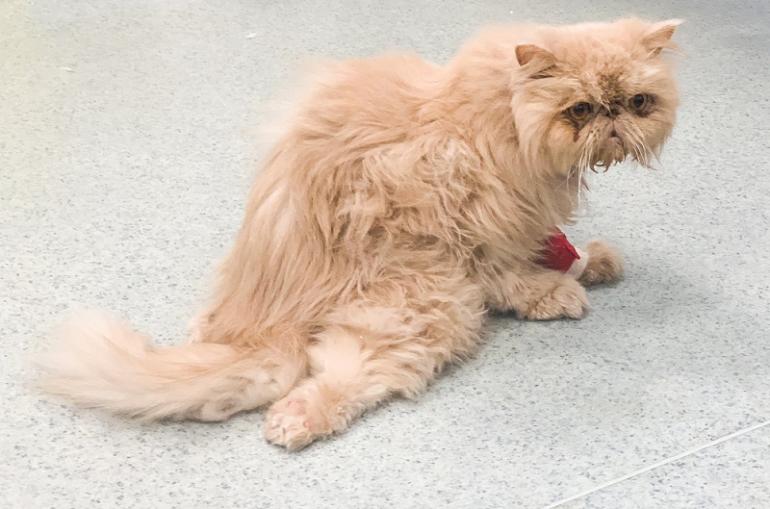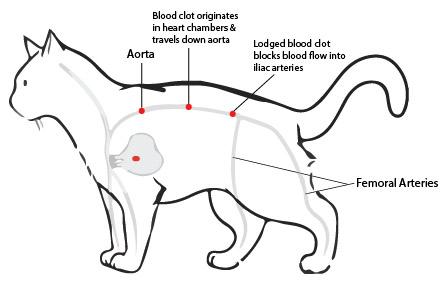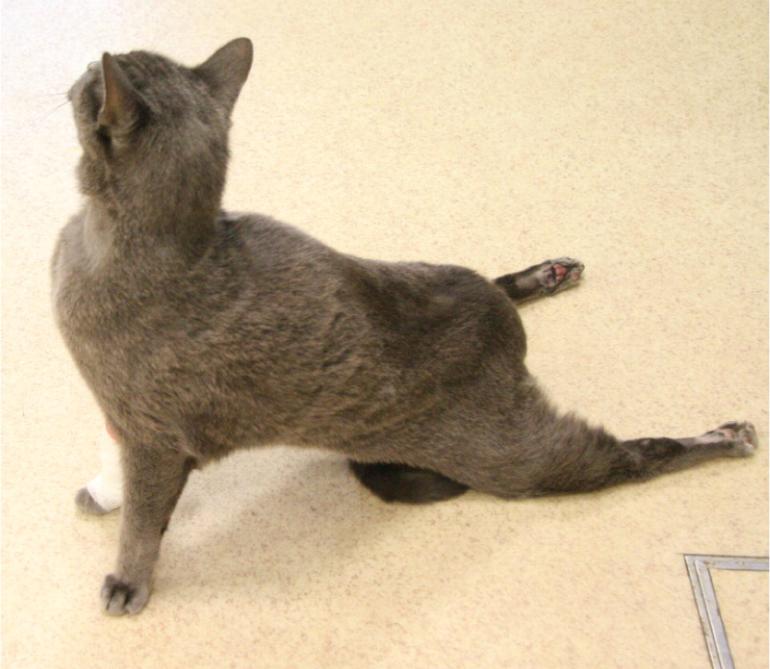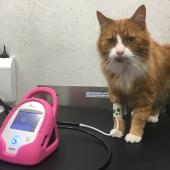Feline Aortic Thromboembolism: Understanding Sudden Paralysis and Cat's Silent Killer

Cats are known for their grace and agility, but they are not immune to health issues. One particularly dangerous condition that can affect our feline friends is Feline Aortic Thromboembolism (FATE). Often referred to as a cat's silent killer, FATE is a medical emergency that requires immediate attention and understanding from pet owners.
Aortic thromboembolism
A blood clot can strike a cat "out of the blue," causing dramatic symptoms (such as sudden lameness and pain) and possibly catastrophic harm. Most typically affected and potentially paralyzed are the front right leg and the back legs. This is a serious situation; you need to get veterinary assistance right away if you think your cat may have had a blood clot.

What is thromboembolism?
The terms "thrombo" and "embolism" combine to form the term "thromboembolism." An embolus is something that goes through the bloodstream, lodges in a blood vessel, and blocks it; a thrombus is a blood clot that occurs in a blood vessel or within the heart. Consequently, thromboembolism is the development of a thrombus, or blood clot, in the circulatory system that breaks free and travels through the bloodstream until it becomes lodged in a blood artery and stops it. Anywhere in the body that has a clot could have a blocked vessel. The legs (usually the back legs), the lungs (pulmonary embolism), the kidneys, the gastrointestinal system, and the brain (stroke) are the more often recognized sites.
What are the signs of a thromboembolism?
One of the most challenging aspects of FATE is its sudden onset. One moment, your cat may seem perfectly healthy, and the next, they are unable to use their hind legs. This abrupt paralysis, often accompanied by vocalization, rapid breathing, and distress, should be considered a veterinary emergency. Other signs might include pale gums, a weak pulse, and cold hind limbs.
When a blood vessel becomes blocked, the tissue it normally supplies is deprived of a blood supply (and therefore oxygen). The signs will depend on the location of the affected blood vessel. In the cat clots most often get stuck in the main blood vessels providing blood supply to the back legs. One or both back legs may be affected. Your cat will be lame or might not be able to stand or use the affected leg or legs at all. The legs may be colder, the muscles may be firm and the nails and foot pads (if not pigmented) may be pale. In the beginning this condition is very painful and your cat might cry, look at or even chew the affected leg(s). The condition comes on very suddenly so a cat may go out of the house apparently completely healthy and later be found on the doorstep unable to stand on their back legs.
Your cat may breathe more heavily, more quickly, and via its mouth if a blood artery in the lung is clogged.A brain clot may result in seizures or changes in behavior.Your veterinarian is qualified to diagnose this.
Being a medical emergency, thromboembolism requires your cat to see a veterinarian as soon as possible.
How would my vet know if my cat has an aortic thromboembolism?
If the symptoms on your cat came on suddenly, your vet might already be thinking blood clot. However, cats that suffer from back pain or have been involved in car accidents could show similar signs.Your veterinarian will inspect your cat's legs in great detail and check for pulses. If your cat doesn't have them, it probably has a blocked artery in one or both of its legs.

Why does my vet need to do so many tests on my cat?
An artery that is clogged is a dangerous issue. As a result of the decreased blood flow, harmful compounds accumulate in the tissue. This may be fatal, and if an organ's blood supply is cut off, the organ's functionality will be compromised. Your veterinarian can identify these changes in the blood with a few straightforward blood tests.
Blood clots can form for a number of causes, and even though your cat hasn't displayed any other symptoms, there's a good chance that they have a serious, terminal condition. In order to determine the best course of action for your cat and to offer you with an estimate of the likely outcome, your veterinarian will look into these. The majority of blood clots in cats are caused by heart problems, therefore your veterinarian may examine the heart with an ultrasound or take chest X-rays.If your veterinarian feels that your cat may have a clot forming as a result of one of these tumors, they may additionally perform abdominal ultrasounds and/or X-rays.
Long-term monitoring will be necessary to track the underlying disease's progression and ensure that the treatment is both successful and well-tolerated after it is initiated.
Can my cat be treated?
All cases can be treated, however in many situations the clot cannot be resolved. "Clot-busting drugs can only be used in cats shortly after the clot develops."possibly if your cat is brought in for treatment right away, your veterinarian will want to go through all of your options and determine whether using these medications is the right course of action for your cat because they can have serious adverse effects that could possibly cause your cat's death.
Cats, however, have additional blood veins that can expand to supply the legs with blood in the event that the primary supply is cut off. This takes time, so in order to buy your cat some extra time to heal, your veterinarian will prescribe painkillers, medications that stop new clot formation, and treatment for any underlying conditions that may have contributed to the clot in the first place.
Your veterinarian will keep you updated on your cat's development as treatment goes on, which could take several weeks. Cats will continue receiving long-term care for the underlying illness after being released from the hospital (many times, these disorders are incurable). Additionally, clot-prevention drugs must be continued. These days, most medications are fairly effective and hardly ever cause bleeding.

Will my cat get better?
It is dependent upon the underlying condition that initially generated the clot as well as any potential organ damage that clots may cause. Sadly, there is not much hope for cats who have thromboembolism. Approximately one-third of all afflicted cats do not recover from the first episode (however this is sometimes due to the owner's decision to end the life). Nonetheless, it may be worthwhile to begin treatment to purchase some time, depending on the severity (your veterinarian may advise you on this).
If your cat shows progress in the first few days, there's a strong possibility that it will get better still and that it will heal and live a healthy, happy life. Even in cats who make a full recovery, the damaged leg or legs frequently never fully function. Even if receiving long-term anticoagulation medication treatment, your cat is still susceptible to recurrent clots because the majority of underlying disorders that cause clots are incurable. Additionally, around 50% of cats will experience another thrombembolism.
Thromboembolism is an acute, potentially fatal illness that can strike at any time.Cats that are affected will have a major underlying illness that is nearly definitely curable but can be treated. Your cat may need treatment for the remainder of its life if it is harmed, and it may develop another clot. Your veterinarian can assess the severity of your cat's condition and determine whether trying treatment is worthwhile. If they do respond to treatment, cats can live for several months or occasionally even years with a decent quality of life.
The Emotional Impact
For cat owners, witnessing a beloved pet go through FATE can be emotionally devastating. The sudden and severe nature of the condition leaves many feeling helpless. It is essential to lean on your veterinarian for support and advice, and to be aware of the signs and symptoms to ensure rapid action in case of an emergency.
In conclusion, Feline Aortic Thromboembolism is a grave and often fatal condition that demands awareness and understanding. Being aware of the symptoms, seeking immediate veterinary care, and focusing on preventive measures can help cat owners protect their feline companions from this silent killer. By staying informed and proactive, we can give our cats the best chance at a long, healthy, and happy life.





